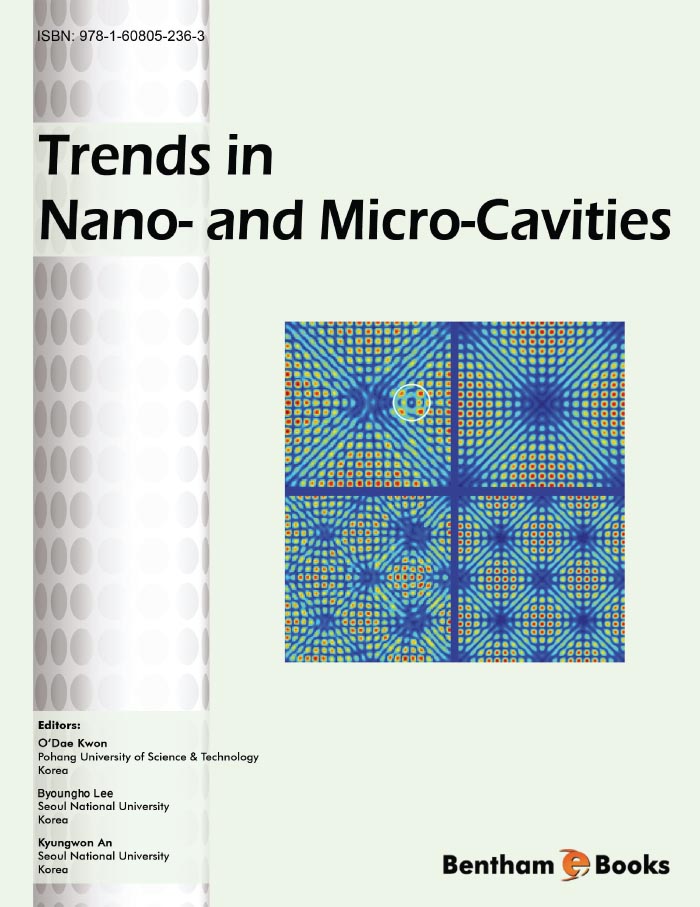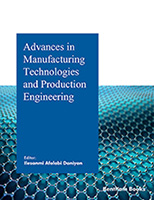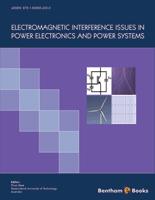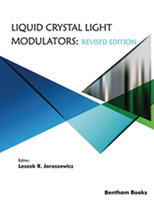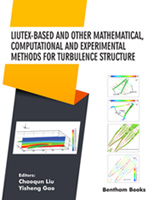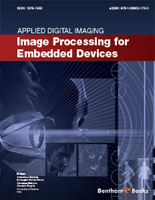In the summer of 2009, Profs. Hans-Jurgen St¨ockmann, Chil-Min Kim, Sang-Wook Kim and I co-organized the first International Workshop on Microcavities and Their Applications (WOMA 2009) at Seoul National University in Seoul, Korea. The workshop lasted for four days and the worldexperts on microcavites presented their cutting-edge research results at the Mokam BK auditorium. The most of the presentations were on wave- and ray-chaos in deformed microcavities and its applications to opto-electronics, but we also had talks on the rapid-growing fields of optomechanics and surface plasmonics in nano- and micro-scale components. Since we planed to have the workshop in every two years and since most of the authors actively publish their works in peer-reviewed journals, we organizers decided not to publish a workshop proceedings. Then there came an e-book proposal by Profs. O’Dae Kwon and Byoungho Lee, supported by Bentham Science Publishing. The proposal was to have some of the presenters in WOMA 2009 as main contributors and to have a small number of outside contributors as well. That is how this e-book was born.
One of the purpose of this e-book was therefore to provide a snapshot on the current status of the main topics covered in WOMA 2009. Another was to offer an overview on the state-of-the-art of nano- and micro-cavity applications in photonics by invited contributors: the small mode volumes and the ultralow losses of the resonance modes in these cavities offer a high potential for photonic applications. I think those purposes have been fulfilled to a large extent.
This e-book is divided into two parts. The first part, composed of five chapters, deals with the main topics covered in WOMA 2009, namely wave- and ray-chaos in open microcavity systems. For example, Prof. Achim Richter and his colleagues discuss semiclassical approaches for dielectric thus open resonators. For this, they consider dielectric microwave resonators, which are fully equivalent to dielectric microcavities in the infrared to optical regime if the ratio between wavelength and system size is similar. They introduce effective index of refraction model for calculating the resonance frequencies and widths of a flat three-dimensional disk and discuss some limitations of the model. They report investigation of the near field distributions of a dielectric square billiard, revealing superscarred states with some unexpected properties, and examination of a trace formula connecting the density of states with the periodic orbits in a circular resonator. By comparing the experimental results and the theoretical predictions they show the potency but also the limitations of different semiclassical models for dielectric cavities.
Prof. Kyungwon An and Dr. Juhee Yang consider another open microcavity system, but their interest is a resonant optical pumping phenomenon based on the dynamical tunneling process occurring in a mixed phase space. They present a mode-mode coupling theory for explaining how the pumping efficiency of a high-Q lasing mode can be enhanced by two orders of magnitude whenever the pump is resonant with a high-Q pump mode localized in a regular region separated from the chaotic sea in the mixed phase space. From the solution of the coupled differential equations of chaotic modes and a high-Q regular mode, they obtain the pumping efficiency explicitly as a function of pump detuning, coupling constants and decay rates of the involved modes. They then present an analysis method to obtain the effective coupling constant and the tunneling rate from the observed pumping efficiency for a deformed dielectric microcavity.
Drs. Susumu Shinohara and Takahisa Harayama consider the correspondence between ray and wave descriptions in a fully chaotic regime of twodimensional chaotic microcavities and examine why the unstable manifold theory works so well for the output directionality in these cavities. They focus on a stadium-shaped cavity exhibiting fully chaotic ray dynamics, and investigate how ray chaos is manifested in emission patterns or eigenfunctions of resonances. With the introduction of steady flux phase-space distributions they find intrinsic localization phenomenon in every resonance, causing discrepancies with the ray description, but the average of many lowloss resonances reproducing the ray description very well.
Profs. Jan Wiersig, Hui Cao and their colleagues discuss a more practical problem in their article, namely how to make unidirectional emission from high-Q modes in deformed microcavities. They review the recent progress in microdisk design for unidirectional light emission from modes with low losses and discuss the pros and cons of various approaches with an emphasis on the ray-wave correspondence in such deformed microdisks. Their article nicely bridges the gap between fundamental studies and practical applications of wave and ray chaos in microcavities.
Prof. Hans-Juergne St¨ockmann and his coworkers provide a review on microwave studies of dielectric disk cavities. The fabrication of microcavities requires a considerable effort, and each change of the shape, of coupling geometries, etc. means a new fabrication process. One can instead choose dielectric cavities in the microwave regime and investigate their mode and emission properties in various shapes without much difficulty. The authors ii present the studies on field distributions, which is not possible with the optical counterparts, and emission patterns of quadrupolar-deformed cavities, coupling and interactions between neighboring circular disks. Interestingly, they could use these cavities in a honeycomb lattice and realize graphene-like materials.
The second part of this e-book consists of four chapters and deals with the applications of nano- and micro-cavities. In particular, Prof. O’Dae Kwon and this colleagues present a comprehensive overview on their-own photonic quantum ring (PQR) lasers based on whispering cave modes. This type of rather exotic lasing was predicted by A. Yariv to have thermally stable spectra and Prof. Kwon’s group demonstrated it experimentally. The emission of PQR, they have observed, is surface normal dominant, which may be advantageous for lighting applications including 3D TV and biophotonics.
Prof. Byoungho Lee and his colleague Junghyun Park present a comprehensive studies on plasmonic nano- and micro-scale waveguides, which has drawn a lot of interest recently related to nanometer-scale photonics applications. After providing a brief review of the fundamental guiding properties of a metal-insulator-metal (MIM) plasmonic waveguide, they discuss working principles and design processes of various plasmonic resonators in MIM waveguides, including the plasmonic resonators based on the waveguide Bragg grating, those originating from the Fabry-Perot resonance in the low-refractive-index barriers, resonators with a stub geometry, and those comprised of ring resonators.
Prof. Bumki Min and his colleagues discuss a new type of resonator for optomechanics applications. They consider double-disk resonators, composed of two nearly-identical dielectric disks separated by nanoscale air gap and provide theoretical descriptions on their eigenmodes with small modal volumes and high-Q factors. They then describe experimental verification of these eigenmodes in tens-of-nanometer gap double-disk/air-slot resonator and show that the mechanical eigenmodes of double-disk structures can be actuated by the optical gradient forces for various optomechanics applications.
Finally, Prof. Seng-Tiong Ho and his colleagues discuss various progresses in 2D whispering-gallery-mode microresonators. To understand radiation loss, they introduce a numerically method to compute the radiation loss using conformal transformation. They discuss how to simulate lasing properties by using a multi-level multi-electron Finite-Difference Time- Domain (MLME FDTD) quantum model for the semiconductor medium. They discuss how to compute radiation and scattering losses using a FDTD method and then compare the results to the conformal transformation results. They also discuss how to optimize output coupling of the lasing light.
With all of these articles by the world-renowned experts on nano- and micro-cavities, I hope this e-book would serve as a useful reference to the readers to provide the current cutting-edge research trends on both fundamental issues and practical applications of nano- and micro-cavities.
Kyungwon An, Co-Editor
Seoul National University
Kwanak, Seoul, Korea

